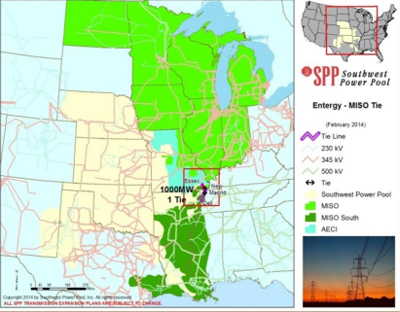By Chris O’Malley
MISO will have to adopt neighbor SPP’s cost allocation method for interregional transmission facilities addressing reliability needs, and both RTOs must revise their proposal for public policy projects, the Federal Energy Regulatory Commission said Thursday.
However, FERC’s Feb. 19 ruling (ER13-1937) accepted the RTOs’ proposal to use adjusted production costs in allocating the costs of interregional transmission facilities addressing economic needs.
MISO and SPP agreed on a number of revisions to their joint operating agreement to comply with Order 1000’s interregional planning requirements. But the RTOs could not agree on apportioning costs for reliability projects.
FERC rejected MISO’s proposal to use only adjusted production costs to evaluate interregional reliability upgrades, saying it must adopt SPP’s plan, which also incorporates avoided costs.
FERC said it agreed with SPP that “adjusted production cost only measures the generation and congestion cost to serve load and does not account for the quantifiable benefits of meeting public policy requirements or addressing reliability issues.”
SPP argued that MISO’s proposal disregarded the nature of the constraint and forced the use of a metric that is irrelevant for measuring the benefits associated with resolving a reliability constraint.
“We agree that SPP’s proposal to use a combination of avoided costs and adjusted production cost savings allocates the costs of interregional transmission facilities addressing reliability needs to SPP and MISO in a manner that is at least roughly commensurate with the estimated benefits of the interregional transmission facility while ensuring that [the RTOs] are not involuntarily allocated costs of these interregional transmission facilities from which they do not benefit,” FERC said.
FERC, however, also faulted SPP because it said it would use a metric “yet to be determined” for public policy projects.
MISO and SPP will have 60 days to file revisions with the commission.


